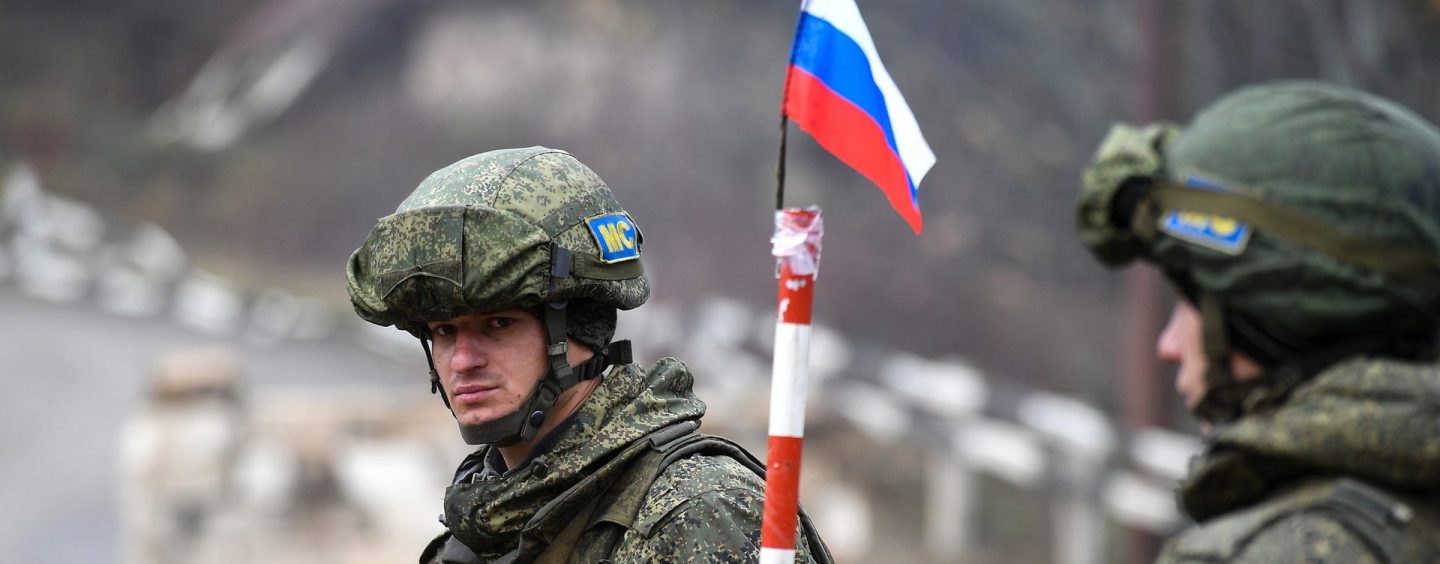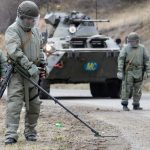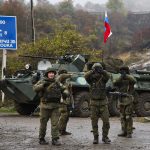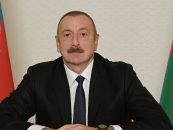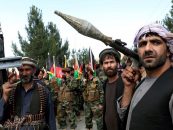By Vladimir Socor
Under the November 9–10, 2020 armistice declaration, Russia’s “peacekeeping” mission in Upper (Nagorno) Karabakh is limited to 1,960 motor-rifle troops with light weapons and armored personnel carriers. According to Russian President Vladimir Putin, in his end-of-year Q&A session with the public, any further inputs into this Russian mission would have to be approved by both Azerbaijan and Armenia.
Nevertheless, Russia has unilaterally augmented its military and quasi-military presence in Upper Karabakh, above and beyond the armistice agreement’s limitations. It looks like a case of mission creep, albeit of the planned variety rather than a spontaneous one.
Although the agreement mentions neither helicopters nor unmanned aerial vehicles, the Russian mission received eight helicopters (four transport and four strike helicopters) before the ink had dried on that agreement and shortly thereafter, the mission received Orlan-10 reconnaissance unmanned aerial vehicles. Although such additions are reasonable in any peacekeeping mission (once the mission is accepted), they also illustrate Russia’s ways of ignoring or stretching agreements after signing them.
Some of the Russian troops take time off from their statutory peacekeeping duties in order to perform combat exercises with live fire, an activity not foreseen in the armistice agreement either. No information is available in the public domain about the Russian troops ‘rules of engagement in hypothetical combat situations.
Russian troops also escort search-and-rescue teams from Yerevan and Stepanakert looking for their soldiers killed or missing in action in Azerbaijani-controlled territory. Those casualty figures are high and still far from fully accounted. The Russians mediate between the Armenian and the Azerbaijani sides to facilitate those search operations.
Apart from the designated peacekeepers and beyond their number, Russian defense ministry personnel are engaged in de-mining and unexploded ordnance disposal. Russian military police personnel and representatives of Russia’s Prosecutor General’s office are also deployed.
For the first time in the history of Russia‘s “peacekeeping” missions, its military personnel has taken charge of civil affairs in this theater of operation. The Interdepartmental Center for Humanitarian Response in “Nagorno” Karabakh, created by President Putin’s decree, operates the main camp in Stepanakert and branch extensions in other localities. It is engaged in post-conflict reconstruction, infrastructure maintenance, distribution of humanitarian assistance and provision of medical care to the local population (two field hospitals and ambulatory care). The Defense Ministry is in overall charge of the Center. The Center’s personnel come largely from Russia’s ministry for emergency situations, a fully militarized institution. Russia’s Federal Security Service and some civilian departments also contribute personnel to this Center. The Center is instructed to work closely with Russia’s “peacekeeping” troops.
The personnel numbers of the Humanitarian Response Center and other Russian military and militarized personnel, other than the designated peacekeepers, have yet to be publicly disclosed. The aggregate numbers evidently exceed the 1,960 designated peacekeepers that the armistice agreement allows. It seems that Russia is digging in for a long time to come into this territory. Although Russia officially recognizes Azerbaijan’s legal sovereignty there, its representatives work with the unrecognized Karabakh “republic’s” de facto authorities, contributing both indirectly and directly to their consolidation.
The 44-day war caused a stampede of Karabakh Armenian refugees into Armenia. Their overwhelming majority came from Karabakh’s territory that remained under Armenian control throughout the war, whereas the territory that Azerbaijan succeeded in regaining had held a small share of pre-war “Nagorno” Karabakh’s population. Following the November 10 ceasefire, the government in Yerevan and Russia’s “peacekeeping” force have worked together to repatriate those refugees to Karabakh.
Between November 14, 2020, and January 21, Russian troops escorted—by their own count—50,390 refugees back to the Armenian-controlled territory in Karabakh. This number represents slightly more than one-half the total number of war refugees from Karabakh to Armenia. The authorities in Yerevan and Stepanakert have assessed the total number of Karabakh refugees to Armenia at 93,300—an estimate with a 2–3 percent margin of error. That high number, however, may well have included Karabakh Armenians, who had moved to Armenia prior to the 44-day war.
Holding the Karabakh “republic’s“ population firmly in its place, attached as it were to the ground, is a top-priority political objective for Yerevan and Stepanakert, as well as a shared Russian interest. Yerevan and Stepanakert had tried hard over the years to discourage Karabakh Armenians from moving permanently to Armenia, let alone abroad to Russia or elsewhere. Notwithstanding Karabakh’s harsh living conditions, keeping a substantial Armenian population there—the demographic argument—is central to the Armenian case for a political solution based on ethnicity. From Russia’s standpoint, protection of the Karabakh Armenians has turned into a rationale or alibi for Russia’s military presence in the territory.
That is why the Russian “passportization” of Karabakh Armenians (on the tried-and-tested model of Transnistria, Abkhazia and South Ossetia, or Donbas) poses a unique dilemma in the case of Karabakh. While such “passportization” could provide Russia with the pretext for a permanent military presence, and even for using force to “protect Russian citizens,” it could also open the doors for Karabakh Armenians to migrate to Russia. This is something that Moscow, Yerevan and Stepanakert would all want to avoid. Moreover, for now and some time to come, Moscow will have to take Baku’s interests seriously into account.

